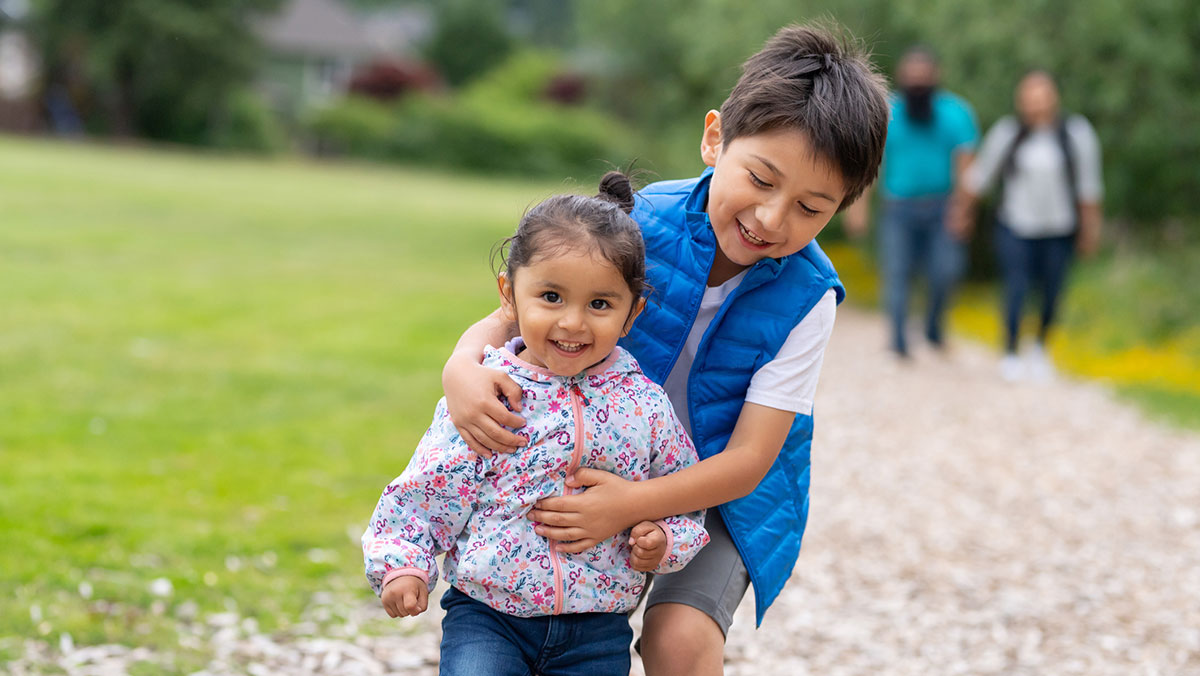Promoting Health and Wellness in Indian Country
Balancing diabetes awareness and type 2 diabetes prevention with cultural traditions

Preventing type 2 diabetes and improving health while balancing cultural practices and science.
Some American Indian and Alaska Native elders still recall a time when there was no word for diabetes in their language because the condition was so uncommon. They also remember being taught how to stay healthy. These lessons were part of their traditional knowledge, which was grounded in cultural values and practices and refined through generations of observation, experimentation, and adaptation.
But by the 1980s, type 2 diabetes was taking a heavy toll on American Indian and Alaska Native communities. From 1994 to 2004, diagnosed diabetes more than doubled among Native adults 35 or younger.
Tribal leaders and allies brought their concerns about the devastation of diabetes to Congress, which enacted the Special Diabetes Program for Indians (SDPI), administered by the Indian Health Service (IHS). CDC launched the Native Diabetes Wellness Program in 2004 to support and promote the seminal work of over 300 SDPIs across the country.
Reducing Health Disparities and Improving Health
The Native Diabetes Wellness Program promotes type 2 diabetes prevention and overall health among American Indian and Alaska Native people while honoring a balance of cultural practices and Western science.
American Indian and Alaska Native adults are almost 3 times more likely than non-Hispanic White adults to be diagnosed with diabetes, the highest rate of any racial or ethnic group in the United States. Longstanding social and health inequities have put Native people at increased risk of having poor overall health, getting sick, and having worse outcomes when they do get sick.
The Native Diabetes Wellness Program is dedicated to promoting wellness, diabetes awareness, and type 2 diabetes prevention by:
- Increasing access to the National Diabetes Prevention Program lifestyle change program through cooperative agreements, including Good Health and Wellness in Indian Country and the Tribal Public Health Capacity Building and Quality Improvement Umbrella Cooperative Agreement awarded to the Choctaw Nation of Oklahoma.
- Sharing stories about how American Indian and Alaska Native communities are reclaiming traditional foods and storytelling to promote health through their Native cultures.
- Developing the Eagle Books series for young people to help them understand the importance of healthy eating and physical activity. The series is free to download.
- Providing hands-on resources such as the Eagle Books Toolkit, which includes wellness activities, play scripts, education guides, and art projects based on the messages and characters in the Eagle Books. The toolkit is free to download.
Reaching Young People Through Storytelling
Beginning in 1999, CDC and IHS held listening sessions with 171 tribes and consulted tribal leaders across the nation. Concern about future generations at risk of type 2 diabetes emerged, and storytelling was recommended as a way to share traditional knowledge about health. But because type 2 diabetes was a relatively new condition for tribal communities, they had few stories about prevention.
CDC and IHS commissioned the illustrated Eagle Books to address this gap. The series has four books for K–4 readers, as well as three chapter books and a graphic novel for middle school readers. All feature animal characters—a wise eagle, a grateful rabbit, and a clever coyote—and four young friends who respect traditional knowledge about health, including healthy eating, physical activity, wise choices, and sharing their knowledge with family and friends.
Through the power of storytelling, the Eagle Books:
- Communicate traditional ways of health that can be shared in homes, schools, and communities.
- Encourage children to look to their families and communities to learn about health.
- Illustrate joy and gratitude for the gifts of food and water.
- Highlight the leadership and wisdom of American Indian and Alaska Native communities.
CDC has distributed more than 3 million Eagle Books to schools, parents, and health programs that serve children.
Success Story: Eagle Adventure
The Chickasaw Nation and Oklahoma State University teamed up to create Eagle Adventureexternal icon, an entertainment-education program based on the Eagle Books. Students in grades 1 to 3 begin the program by watching the Eagle Adventure Play, which embraces traditions of Native American storytelling. The play is followed by in-class lessons to help children talk about their own health and nutrition habits. Children are encouraged to share what they learn with their parents and other family members through take-home activities, including simple recipes and fun physical activities.
After the program, students demonstrated the intention to adopt healthy eating and activity choices; caregivers reported that their children ask to buy fruit and vegetables. More than 6,000 students and their families have participated since the Eagle Adventure program began.